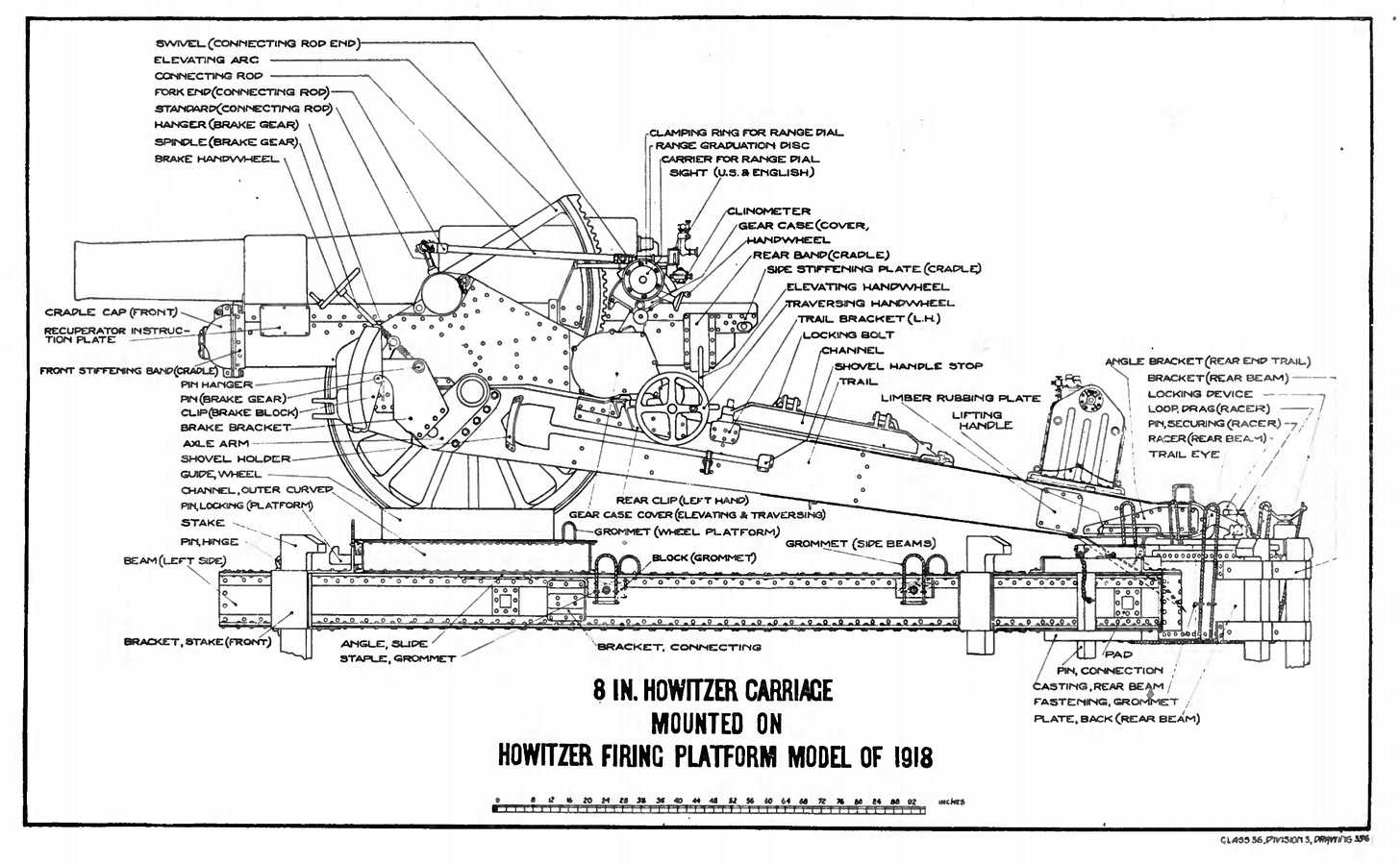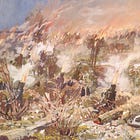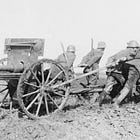152mm Howitzers
A relic of pre-metric measurements
Every once in a while, I will revisit, refurbish, and republish a piece posted to The Tactical Notebook in the early days of the newsletter. When I do this, I correct mistakes, reformat graphics, and, in many instances, add new illustrations. As the process of re-sending such posts removes the comments made on the original article, I often add a link to the latter.
During the last few decades of the Russian Empire, gunners in the service of the Tsar measured calibers in inches. In particular, they employed 3-inch light field guns, 4.2-inch light field howitzers, 4.7-inch heavy field guns, and 6-inch heavy field howitzers. However, as the German and French gun-founders who made many of these weapons had already adopted the metric system, these pieces were often described as 76.2mm guns, 122mm howitzers, 106.7mm guns, and 152mm howitzers.
When the Bolsheviks seized power in Russia, they imposed the metric system on the country. As this proved easier to do in the realm of language than on the shop floor of arms factories, the Red Army ended up with a lot of ordnance with metric designations that differed slightly from those in common use around the world. Ironically, many of these numbers could also be found in the names of weapons and projectiles used by the armed forces of the British Empire, the U.S. Navy, and the Coast Artillery of the U.S. Army.
The adoption of French weapons by the American Expeditionary Force preserved the Field Artillery of the U.S. Army and Marine Corps from this fate. Indeed, for much of the twentieth century, the only first-line American field pieces with ‘inch’ in their names were 8-inch (203mm) howitzers, the first of which was a British weapon adopted by both the French and American armies during World War I. Strange to say, rather than referring to this weapon as the obusier de 203mm (‘howitzer of 203mm’), French gunners called it the obusier de 8 pouces (‘howitzer of eight inches’).

For an earlier version of this article:
For posts on similar subjects:
To share, subscribe, or support:










Interesting - so when did NATO/Western countries shift to those generally rounder numbers of calibre? Also slight typo, I think you put 7.62mm where you meant 76.2 (can you edit on Substack after publishing?)